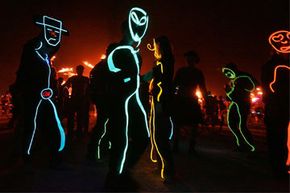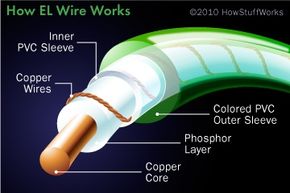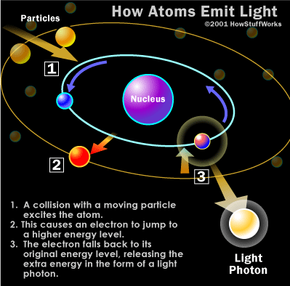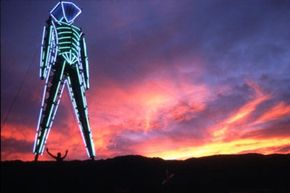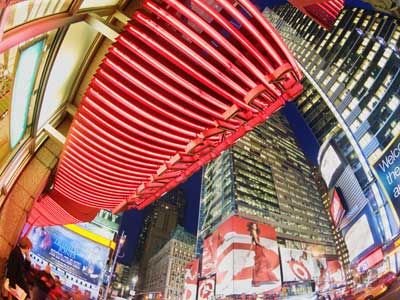Electroluminescent wire, also known as EL wire, has been around since its invention in 1936 by Frenchman Georges Destriau. Its function -- creating a neon-like light -- isn't new, yet people are developing ever more creative ways to capitalize on its unique qualities. Electroluminescent material is available in sheet and wire form, and both varieties have become more suited to consumer use since their invention. The first EL products were made of thick, inflexible and fragile materials. Electroluminescent wire, for example, first hit the scene encased in glass or ceramic. There was a significant problem with this design. Neither glass nor ceramic is malleable: you can't coil, wrap or stretch it into new and interesting shapes. This significantly reduces EL wire's usefulness. Encasing the wire in a pliable, plastic coating easily solved the problem by making EL wire flexible, waterproof and therefore ideal for both indoor and outdoor use.
Advertisement
EL wire's popularity stems from its versatility and efficiency. It's widely used by artists and hackers to illuminate clothing (think glowing suits), bicycle spokes and turntables. It's ubiquitous at festivals such as Burning Man, where people create towering structures adorned with colorful strands soldered together. World-renowned lighting artist Marcus Tremento uses EL wire as a means to blend modern design and art. EL wire also has a decorative safety function when it comes to stairs, walkways and bike helmets. Emergency responders have even used EL wire tape to illuminate accident areas. Whether you buy it or make it yourself, use it for safety lighting or bright clothing, EL wire is a great choice for creative lighting projects large and small.
Exactly how does EL wire work? Let's start by looking at how it's made.
Advertisement
